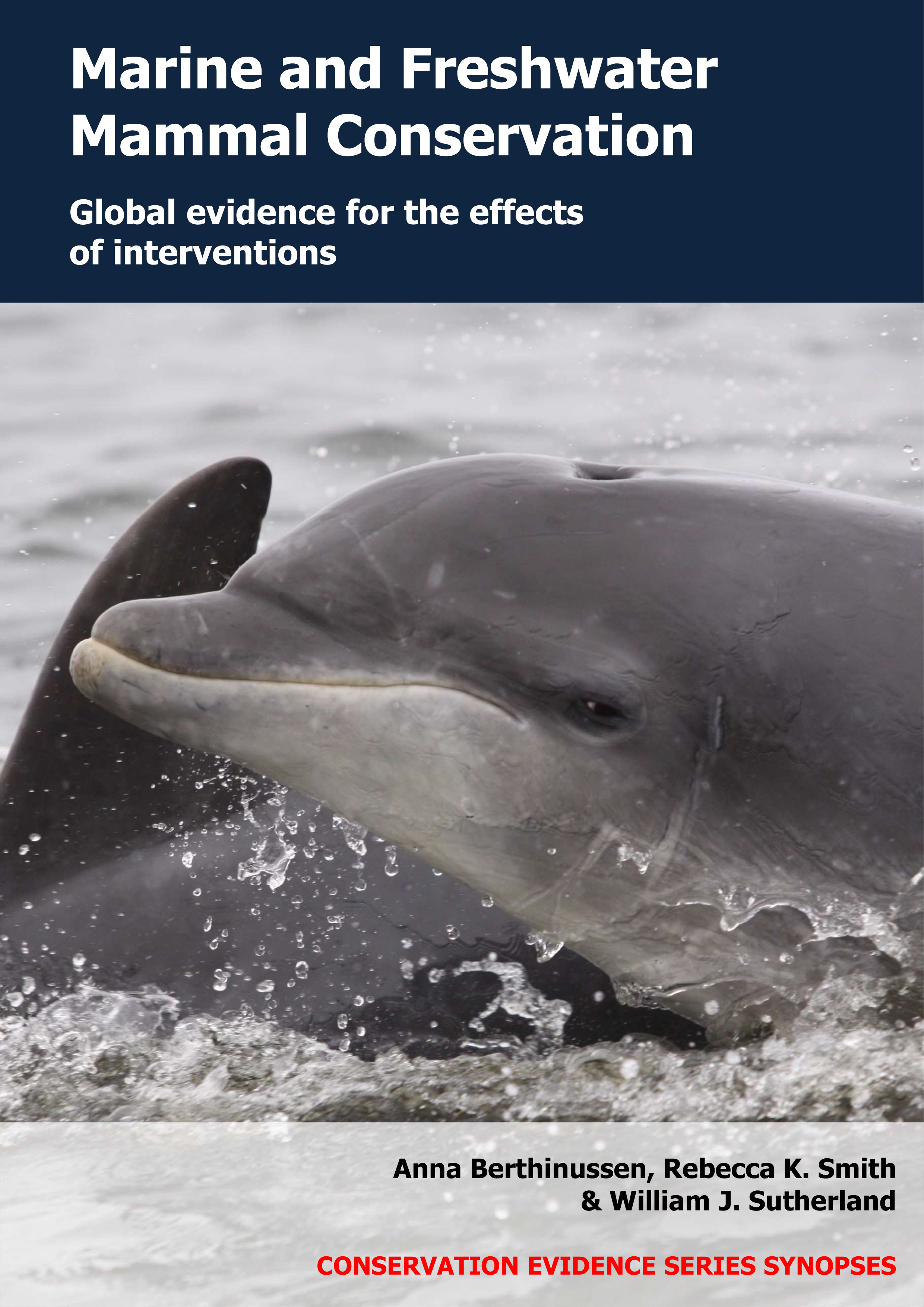Cease or prohibit activities that cause disturbance in sensitive areas for marine and freshwater mammals
-
Overall effectiveness category Likely to be beneficial
-
Number of studies: 2
View assessment score
Hide assessment score
How is the evidence assessed?
-
Effectiveness
60% -
Certainty
40% -
Harms
0%
Study locations
Supporting evidence from individual studies
A before-and-after study in 2006–2012 of a stony reef in the Kattegat sea, Denmark (Mikkelsen et al. 2013) found that prohibiting fishing, along with restoring the reef, resulted in harbour porpoise Phocoena phocoena echolocation clicks being recorded more often and for longer periods than before protection and restoration. The average number of minutes with porpoise recordings and the average duration of porpoise encounters were higher at the reef in each of four years after fishing was prohibited and the reef restored (13–15 minutes/day; 4–5 minutes) than during two years before (6–10 minutes/day; 3 minutes). Porpoise activity at an intact reef 10 km away decreased over the same period (‘before’: 11–15 minutes/day; ‘after’: 3–7 minutes/day). In June–September 2008, a total of 100,000 t of norite boulders were dumped over 19 days to restore a 45,000 m2 cavernous stony reef. Fishing was prohibited around the restored reef in 2009–2012. Porpoise activity was recorded with acoustic data loggers (two at the restored reef; two at an intact reef) for 33–75 days in June–August in each of two years before protection and restoration (2006 and 2007) and each of four years after (2009–2012).
Study and other actions testedA site comparison study in 2013–2014 of two beaches on islands in the Indian Ocean, Western Australia (Osterrieder et al. 2017) found that a beach where human access was prohibited had fewer Australian sea lions Neophoca cinerea showing aggression or retreating compared to a beach where access was partly prohibited. The number of responses to vessels and people in which sea lions showed aggression (gaping or lunging) or retreated were lower at a beach where access was fully prohibited (aggression: 0 responses/h; retreated: 3 responses/h) than at a beach where access was partly prohibited (aggression: 14 responses/h; retreated: 21 responses/h). Less severe responses (e.g. sitting upright, lifting head, looking or entering the water) did not differ significantly between the two beaches (see original paper for data). Both beaches were sea lion haul-out sites designated as sanctuary zones. At one site, public access to the beach was fully prohibited, with viewing permitted from the water only via kayak or boat tours. At the other site, public access was permitted to part of the beach and prohibited in all other areas. Individual responses of sea lions to vessels and people were recorded by observers or remote live video cameras overlooking each of the two sites for a total of 134–142 h during 19–20 days in November–April 2013/2014.
Study and other actions tested
Where has this evidence come from?
List of journals searched by synopsis
All the journals searched for all synopses
This Action forms part of the Action Synopsis:
Marine and Freshwater Mammal Conservation
Marine and Freshwater Mammal Conservation - Published 2021
Marine and Freshwater Mammal Synopsis





)_2023.JPG)














